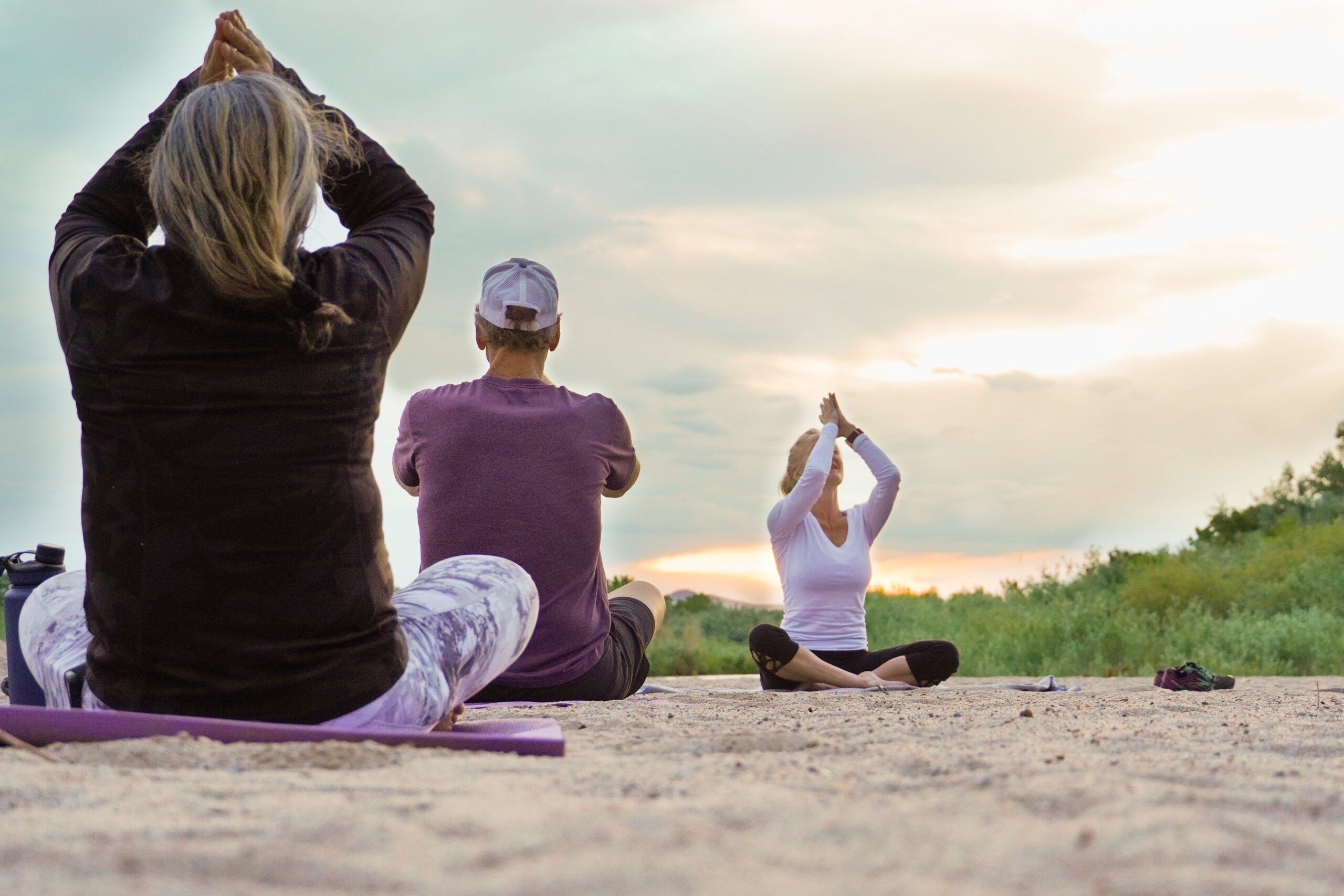Discover the ancient history of yoga, from its origins in the Indus Valley to the Yoga Sutras of Patanjali. Explore its philosophy and relevance in modern life.
Yoga is more than just a modern-day exercise routine; it is an ancient practice with deep roots in spirituality, philosophy, and holistic well-being. Originating thousands of years ago in the Indian subcontinent, yoga has evolved over time, transcending cultural and geographical boundaries. Its philosophy, rich with wisdom, offers insights into the nature of existence, the mind-body connection, and the path to spiritual liberation. In this blog, we will explore the ancient history of yoga, its philosophical foundations, and its enduring relevance.
The Origins of Yoga: Tracing Back Through Time
Pre-Vedic Period: The Proto-Yogic Traditions
Yoga’s history can be traced back over 5,000 years, with evidence found in the Indus Valley Civilization (circa 3300–1900 BCE). Archaeological excavations have uncovered seals depicting figures seated in meditative postures resembling modern yoga asanas. These artifacts suggest the presence of early yogic practices, intertwined with ritualistic and spiritual activities of the time.
The Vedic Era: Foundation of Yogic Thought
The Vedic period (circa 1500–500 BCE) marks the formalization of yoga within the framework of the Vedas, the oldest known scriptures of Hindu philosophy. Although the Vedas primarily focus on rituals, hymns, and sacrifices, they also hint at meditative practices. The term “yoga” appears in the Rigveda, often interpreted as “yoke” or “union,” symbolizing a connection between the individual self (atman) and the universal consciousness (Brahman).
During this time, yoga was primarily a spiritual discipline used by sages (rishis) to harmonize the mind and spirit in pursuit of divine connection.
Classical Yoga: The Codification of Philosophy
The Upanishads and Vedantic Yoga
The Upanishads (circa 800–200 BCE) expanded upon the Vedic texts, delving deeper into metaphysical concepts and the nature of the self. These philosophical treatises emphasize meditation (dhyana), introspection, and the realization of ultimate truth (moksha). Notable concepts such as the unity of atman and Brahman formed the foundation of yogic philosophy.
Key Upanishadic practices included pranayama (breath control) and dhyana, which would later become integral components of yoga.
The Bhagavad Gita: The Pathways of Yoga
Composed around 200 BCE to 200 CE, the Bhagavad Gita is a seminal text in yogic philosophy. A dialogue between the prince Arjuna and the deity Krishna, the Gita presents yoga as a multifaceted discipline. It outlines three primary paths:
- Karma Yoga: The yoga of selfless action.
- Bhakti Yoga: The yoga of devotion and love for the divine.
- Jnana Yoga: The yoga of knowledge and wisdom.
The Gita emphasizes that yoga is a practical tool for navigating life’s challenges, fostering inner peace, and achieving spiritual liberation.
Patanjali’s Yoga Sutras: The Eightfold Path
One of the most significant milestones in the history of yoga is the Yoga Sutras of Patanjali, composed around 200 CE. This text systematically codifies yoga into an eight-limbed path known as Ashtanga Yoga:
- Yama: Ethical principles (e.g., non-violence, truthfulness).
- Niyama: Personal disciplines (e.g., cleanliness, self-study).
- Asana: Physical postures to prepare the body.
- Pranayama: Breath control to regulate energy.
- Pratyahara: Withdrawal of the senses.
- Dharana: Concentration or focused attention.
- Dhyana: Meditation.
- Samadhi: Absorption or spiritual enlightenment.
Patanjali’s work laid the groundwork for understanding yoga as a holistic practice encompassing ethical, physical, and spiritual dimensions.
Post-Classical Yoga: The Blossoming of Hatha Yoga
The medieval period saw the rise of Hatha Yoga, which focused on physical practices to purify the body and mind. Texts like the Hatha Yoga Pradipika (14th century) introduced detailed descriptions of asanas (postures), pranayama, and techniques for awakening the spiritual energy known as kundalini. Unlike earlier forms of yoga, which prioritized meditation and introspection, Hatha Yoga emphasized the integration of physical health and spiritual well-being.
During this time, yoga began to incorporate Tantric elements, focusing on the subtle energies of the body and the chakras (energy centers).
The Philosophical Underpinnings of Yoga
Samkhya Philosophy
Yoga draws heavily from Samkhya, an ancient dualistic philosophy that differentiates between Purusha (pure consciousness) and Prakriti (matter). Samkhya provides a theoretical framework for understanding human existence and the process of liberation.
Advaita Vedanta
Rooted in the Upanishads, Advaita Vedanta emphasizes the non-dualistic unity of atman and Brahman. This philosophy aligns closely with yogic practices aimed at dissolving the ego and realizing the interconnectedness of all existence.
Buddhism and Jainism
Both Buddhism and Jainism significantly influenced the development of yoga. Buddhist practices of mindfulness, meditation, and the Eightfold Path share commonalities with yogic principles. Similarly, Jainism’s emphasis on self-discipline and non-violence resonates with yoga’s ethical tenets.
Yoga in Modern Times: A Global Phenomenon
Revival in the 19th and 20th Centuries
The late 19th century saw a resurgence of interest in yoga, spearheaded by Indian reformers like Swami Vivekananda, who introduced its philosophical aspects to the West. By the mid-20th century, figures like Krishnamacharya, B.K.S. Iyengar, and Pattabhi Jois popularized modern asana-focused practices.
Contemporary Yoga
Today, yoga is a global phenomenon, with millions practicing it for physical fitness, stress relief, and spiritual growth. While modern yoga often emphasizes postures, its roots in ancient philosophy continue to inspire practitioners seeking deeper meaning.
The Enduring Relevance of Yoga Philosophy
Yoga’s ancient philosophy remains profoundly relevant in today’s fast-paced world. Its emphasis on mindfulness, ethical living, and self-realization offers a blueprint for addressing modern challenges. Practices such as pranayama and meditation help combat stress and foster mental clarity, while the ethical principles of yama and niyama promote harmony in relationships and communities.
The universality of yoga’s teachings transcends cultural and religious boundaries, making it a timeless guide to well-being.
Conclusion
The history of yoga is a testament to humanity’s quest for self-discovery and transcendence. From its origins in the Indus Valley to its codification in the Yoga Sutras, and its global resurgence in modern times, yoga has continually adapted while staying true to its philosophical essence. By exploring its ancient roots and embracing its teachings, we can unlock the transformative power of yoga in our own lives.
Yoga is not merely an exercise regimen but a profound journey—a union of body, mind, and spirit that connects us to the infinite. As we continue to practice and understand its philosophy, we honor the wisdom of the sages who illuminated this path thousands of years ago.



